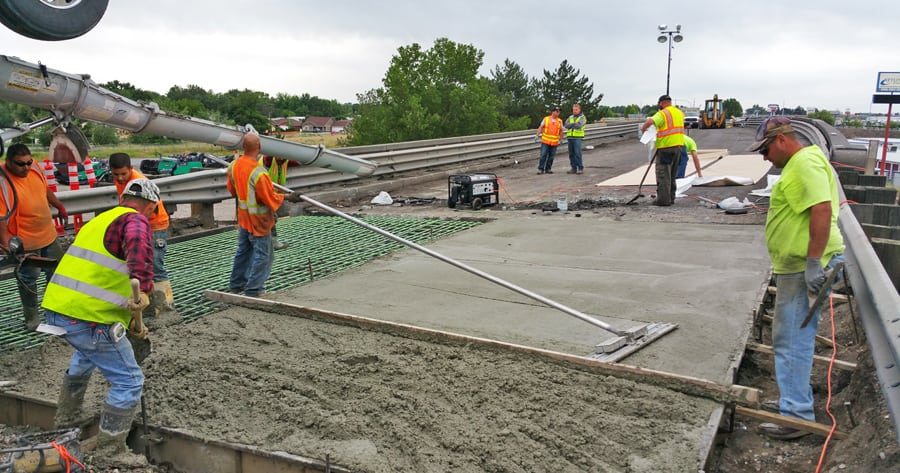
Home » DOT spring projects include repaving, adding cameras at intersections
DOT spring projects include repaving, adding cameras at intersections

April 13, 2017
Cabin fever has broke. And with warmer weather, workers at the state Department of Transportation have been eager to get outside to start on projects to improve roadways and traffic flow in Benton and Franklin counties.
“One project that we’re going to start on in the middle of April is on (Interstate) 82,” said Alex Sanguino, Tri-Cities’ DOT project engineer. “It’s about a mile from Benton City. (The project is) a paver. A mill and fill. That means we’re going to go out with a big grinding machine and remove a little under two inches of asphalt and put it back with new asphalt.”
While repaving may sound like an inconvenience to drivers, it’s necessary to maintain the roadways. Plus, Sanguino said it saves taxpayers hundreds of thousands of dollars in the long run.
“If the road is starting to crack, we need to replace that before the entire roadway fails,” he explained. “If we don’t do these lower-priced improvements now and we wait until it completely fails, it’s going to cost probably around 10 times that.”
For example, while a mile of repaving will cost taxpayers about $100,000, he estimates a mile of construction after a roadway fails to cost about $1 million per mile to repair.
“It’s preventative maintenance,” said Sanguino, who’s been with the DOT for almost two decades. “Making sure the top portion is in good shape and doesn’t affect the rest of the structure.”
Members of the DOT’s materials department take core samples of roadways in question, sort of like a biopsy of the asphalt.
“They assess it to see how far the cracks go,” he said. “It’s hard when you’re driving to see that. Once you see cracks when you’re driving, if you stop and look at it, you’d be surprised.”
Roadways often need to be repaved 10 to 15 years after construction, he said. There are some projects on the docket that Sanguino remembered the DOT working on when he first started in 1998.
The Richland office typically tackles three to 10 projects during the season, which ranges from March to mid-October. During the winter months, Sanguino’s crew finishes previous contract projects. But they also prepare for the future, planning out projects for the region.
Washington has five regions, and Sanguino’s office is in charge of the southcentral part of the state, which spans from the top of Snoqualmie Pass all the way south.
“At the end of each construction project, we have to do final records. We have to make sure all our pay items are in order and that contractors submit their paperwork,” he said. “It’s a long process, and a lot of paperwork.”
There are temperature requirements for asphalt, so during the cold season, crews also plan out spring projects. And this year, the Tri-Cities office has a full plate with at least 10 projects on the horizon.
“There are a lot of little projects. Some are a pretty good size. Two are going to take a lot longer,” he said.
One of the projects is a $6.5 million bridge on Highway 124 that will span about 160 feet.
“If you go toward Walla Walla and cross the Snake River, 124 goes to the left, toward Dayton. You’ll go past Burbank Heights, and you’ll cross railroad tracks. Right before you hit the tree farm. It’s the railroad crossing that’s had some issues,” he said.
There’s a hump on the roadway crews want to tackle first. The crossing is a safety hazard and visibility is an issue, he said, which led the DOT to take on the project.
“We’re just starting that. It’s going to help a lot with eliminating conflicts with the railroad. Once it’s built, there’ll be no more accidents with trains and cars,” Sanguino said.
Because of the scale of the project, DOT is allowing 165 days to complete the railroad crossing work. Other projects, such as the Umatilla Bridge, he said, where crews will replace part of the deck, will take about 300 days and extend into 2018.
Highway 240 traffic camera
Another big task on the horizon is called the Tri-City paver. The project is a combination of paving, adding signals and cameras.
“As you come into Richland, where 240, Stevens and Jadwin meet, we’re going to put a camera in that area. A camera at Van Giesen (and) the Richland Airport — cameras just like on Snoqualmie Pass,” he said, explaining you’ll be able to go to the DOT’s website and see real-time traffic. “And we’re also going to repave from Van Giesen to Aaron Way.”
Altogether the project will cost about $6 million. The Richland DOT has a call out for bids and hopes to begin work in June.
Project costs are determined by how complicated the scope of work is. A long stretch of road repaving may cost less than a more difficult project that includes removing islands, side streets, intersections or bridge work.
For the cable bridge project DOT is working on, for example, crews will remove all of the asphalt and replace it with new asphalt.
The DOT tries to work around holidays and local events, such as Water Follies and Cool Desert Nights. Night work helps with traffic volumes because in some locations the DOT would have miles of backups if work was done during the day.
Night work tends to be more challenging for worker safety, however, and can affect the quality of the project, so projects are only done in the evening when necessary.
“We try to break up our projects into manageable sections,” Sanguino said. “You might get impacted every other year, but it’s a little impact rather than all impacted in one year. Do you want to be delayed ten minutes or two hours?”
Local News Transportation
KEYWORDS april 2017




